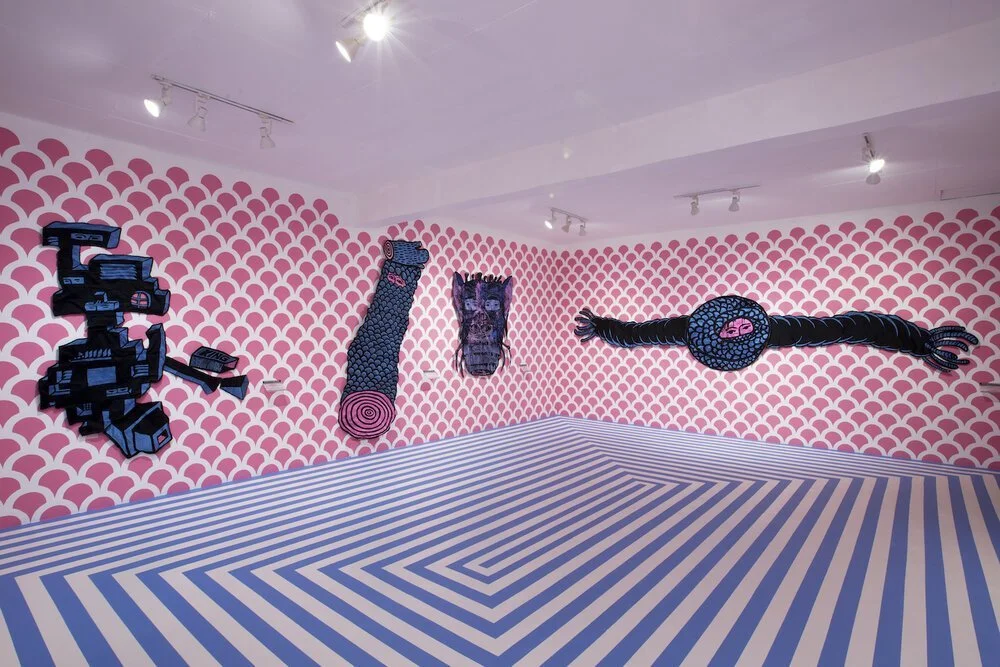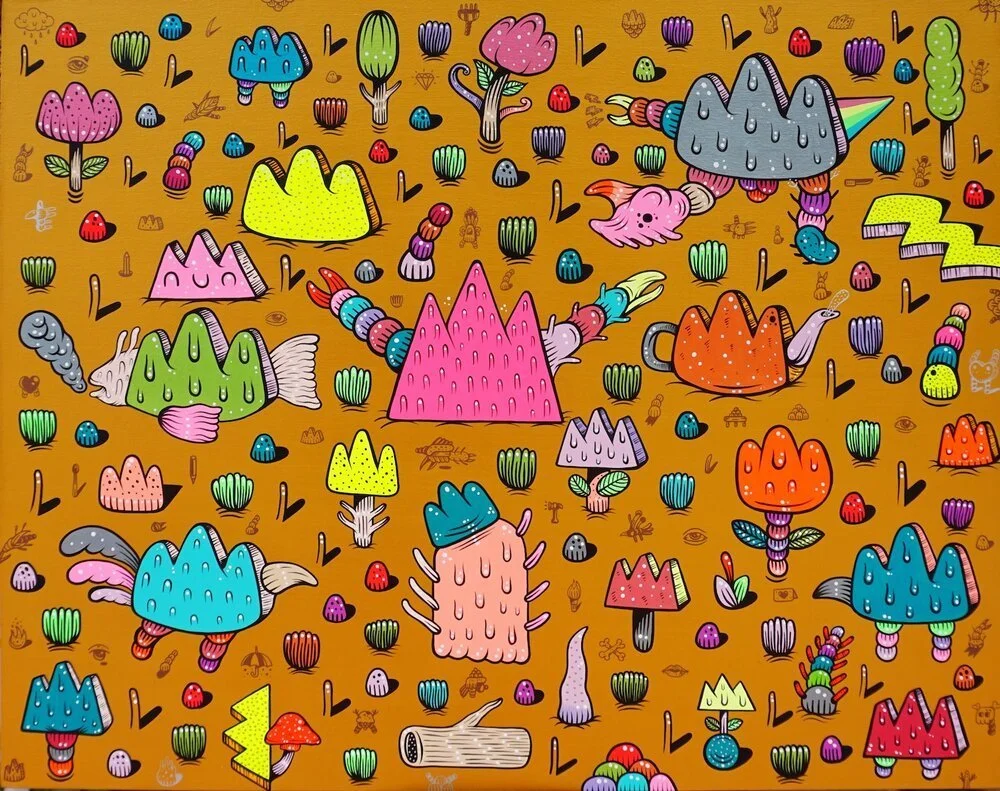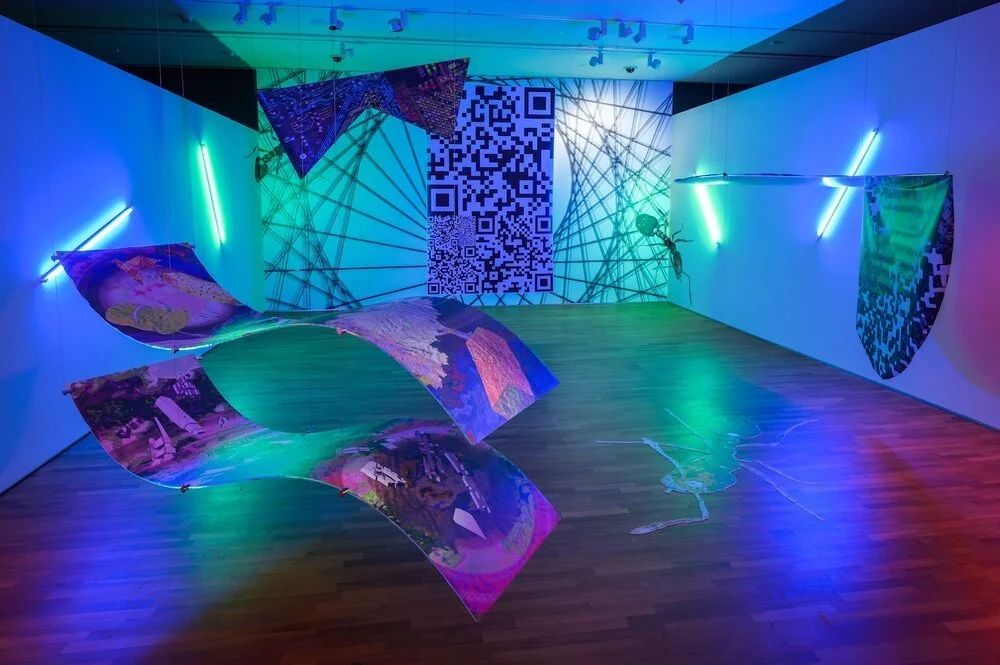Do We Like Digital Exhibitions?
The unique potential of online mediums
Orawan Arunrak, War Journey, Okinawa (video still), 2014, single-channel video, colour, sound, 24min 23sec. Image courtesy of the artist, Bangkok CityCity Gallery and A+ Works of Art.
Key Takeaways:
Auction houses, galleries and art fairs take advantage of the online medium by using its distinct features and paying attention to the choice of artworks displayed.
Despite its advantage of mapping physical space, the 3D format garners mixed reviews.
While selling art online is becoming more normalised, sales have been more difficult to close than they were in person before the pandemic.
In both commercial and non-commercial realms, more exhibitions will likely be made solely for the online platform even after the pandemic is over.
“Nothing beats seeing art in person,” echoes the social media posts of galleries opening after months of lockdown. We hear this line often because it is true; art moves us the most when viewed in the flesh. With the privileging of tangible art objects, the art industry faces a unique challenge amidst the global shift towards digitalisation. On the one hand, online exhibitions seem to be playing a losing game. On the other, the virtual realm is known to hold endless possibilities. This begs the question: can digital shows be viewed as its own unique medium, rather than a second best version of physical exhibitions?
Some, such as auction houses, have used distinct features of the online mode to their advantage. The three-dimensional (3D) virtual exhibition of China Guardian Hong Kong's 2020 Autumn Auctions for Asian 20th Century and Contemporary Art, for instance, creates ethereal gallery spaces that would be difficult to replicate in real life. Each virtual room presents several lots in an otherworldly arena, complete with background music that amplifies the mood of each work. With this re-imagination of space, the logistical limitations of physical exhibitions are overcome through digital means.
For commercial galleries, the artwork medium also plays an important role in the constructing of effective online exhibitions. Making use of the everyday viewing habits of internet users, the A+ Online Festival of Video Art, organised by A+ Works of Art in Kuala Lumpur, focuses solely on the filmic medium, which lends itself more comfortably to the online setting than a physical one. While gallery visitors may walk into a video work halfway or be distracted by surrounding people and objects, participants of the Online Festival are free to watch each video in their own controlled setting. “Every crisis is also an opportunity,” says Director Joshua Lim. “It is obvious to create an online viewing room (OVR) for paintings and sculptures, but we hope that the focus on video art creates a more engaging and immersive experience.”
Ian Woo, Nectar: afternoon motif IV, 2020, gouache, pencil and watercolour on paper, 42 x 29.5cm. Image courtesy of the artist and FOST Gallery.
In the display of traditional mediums online, the choice of specific artworks is also crucial. Aware of the flat surface of digital screens, Singapore-based Fost Gallery launched the online-only exhibition How to Read the Paper, which highlights a selection of paper-based works. “It is always about what is the best way to display an artwork without compromising its character, and the idea of character is different for every artist,” explains artist Ian Woo, whose works from his Nectar: afternoon motif series are in the show. Founder Stephanie Fong shares that two-dimensional art pieces are suitable for the online platform. “Even if they are three-dimensional like artist Grace Tan’s sculptures, they are geometric and generally uniform in whichever angle you view it,” says Fong.
Eko Nugroho, Museum of New Norm, 2020, embroidered painting, variable dimensions. Image courtesy of ARTJOG 2020.
Art fairs are equally innovating to show the character of individual artworks online. Alongside a physical display, ARTJOG 2020 includes an audiovisual digital platform created through a partnership with documentary practitioners. “We try to present artistic objects in a way that remains intact to the aura of the original work,” says Bambang ‘Toko’ Witjaksono, Curator of ARTJOG. “Our concern lies in showing the dramatic aspect of art through a cinematic approach.” In an effort to bring audiences together, the art fair has released a 61-minute, experiential documentary entitled ‘EXPANDED ARTJOG: Resilience’, which acts as a guide to the interrelationships between the fair’s artworks and their contexts.
“Indeed, global lockdowns have motivated an increasing number of galleries to use the 3D interface, suggesting that the format’s perceived value lies in its replication of physical rooms.”
Of all the considerations held in the creation of online shows, one remains the most pertinent: should it be in the form of a two-dimensional (2D) OVR or a 3D virtual exhibition? Borrowing the words of Woo, “the 3D perspective might help clarify an artwork’s potential as an object, while the 2D layout is a standard format that works because it does not claim to replace the idea of the ‘real’”. Indeed, global lockdowns have motivated an increasing number of galleries to use the 3D interface, suggesting that the format’s perceived value lies in its replication of physical rooms.
Dolorosa Sinaga, Solidaritas (Solidarity), bronze, 50 x 65 x 22cm. Image courtesy of Art Agenda, JKT.
Despite its advantage of mapping physical space, the 3D format garners mixed reviews. “3D options are not as good as 2D presentations” laments Isa Lorenzo, Co-Founder of Silverlens. Using a 2D interface for their recent exhibitions, the gallery has instead opted to include videos of their sculptural works turning 360 degrees. Others have also noted their preference for 2D OVRs. “3D virtual exhibitions are not as user-friendly,” says Salima Sarsenova, Curator of ‘Emerging Voices: Stories from Isolation’ by Sapar Contemporary Central Asian Incubator. “We take advantage of the 2D format by incorporating rich additional text alongside artwork images to provide insight into the artists’ process,” she adds. Echoing this view, Andari Suherlan, Indonesian Liaison of Art Agenda, JKT (AAJKT), shares that “the 3D interface may be disorienting as it takes away the focus from individual artworks; the 2D format allows us to hone the unique narratives held by each work in our recent show, Arus Zaman.”
Rizal Hasan, Restructured, 2020, acrylic, decorfin and metallic pen on canvas, 80 x 100cm. Image courtesy of Artemis Art.
Given the upsides of both 2D and 3D formats, perhaps it is best to incorporate both types in cases where the physical show is unavailable. Artemis Art, for instance, has been using a combination of 2D and 3D virtual exhibitions for online-only displays such as COVID Surreality. Collectors appreciate the blended approach as well. Liu Ying Mei, who is Representative of Southeast Asia at White Cube Gallery London and a collector herself, says “3D views help us to look at artworks in a space, and 2D formats are good for viewing the works clearly.”
From a commercial perspective, online sales are slowly becoming more normalised. The mid-year survey, ‘The Impact of COVID-19 on the Gallery Sector’ by Art Basel and UBS, states that the share of online sales rose from 10% of total sales in 2019, to 37% in the first half of 2020, signalling a steady increase in the openness of collectors to purchase art online.
However, in absolute terms, sales have been more difficult to close than they were in person before the pandemic. This may be due to the more conservative spending sentiment during this difficult period, coupled with the general desire for human interaction during the sales process. “Buying art is a very different experience from purchasing consumer goods,” observes S. Jamal Al-Idrus, Owner of Artemis Art. “The human touch is an important part of that experience and something that virtual spaces cannot offer in full,” he adds.
The type of artwork also has a bearing on their saleability online. Jefferson Jong, Director of AAJKT, noted that the online mode is especially challenging for the sale of modern pieces. He says, “Due to the age of each artwork, an in-person condition check is imperative for the making of a purchase.” That said, the gallery, which opened in July earlier this year, has noted an optimistic level of sales made in their physical space. “With the reinstatement of the Jakarta lockdown, we hope that our online exhibition will attract collectors based in both Jakarta and elsewhere,” shares Jong.
“If art is meant to connect people from different backgrounds, the ubiquitous online medium does seem ideal. The online mode, however, may be especially intimidating for those who have just begun collecting.”
Although the digital platform aids in attracting fresh audiences such as overseas collectors, it may not be as inviting to visitors who are new to the field. If art is meant to connect people from different backgrounds, the ubiquitous online medium does seem ideal. The online mode, however, may be especially intimidating for those who have just begun collecting. “Emerging collectors have not yet seen many artworks in person and might have difficulties judging a work without having experienced it,” says Lau. In these instances, in-person gallery experiences remain favourable as visitors have access to tangible artworks and can gain valuable insights from knowledgeable gallery staff.
Kin Chui, Station 13010, 2020, PVC banners, dimensions variable. Image courtesy of National Gallery Singapore.
Given the obstacles of selling art online, could the digital format lend itself better to non-commercial art displays? The National Gallery’s An Exercise of Meaning in a Glitch Season presents a novel approach in the current age of digitalisation. “Rather than thinking in binary terms, there are interesting observations to be made considering the interplay between on-site and digital experiences,” expounds Curator Syaheedah Iskandar. “I would consider the multimedia show as one which requires a physical presence, that uses both old and new screen technologies." As an example, she refers to the display’s Station 13010 by Kin Chui, an installation which imagines a future where the QR code is a new deity that helps us conduct ritual exercises in a digital realm. In a compelling combination of the physical and virtual experience, visitors may scan the work’s QR code to access an exclusively online aspect of the installation. In the near future, perhaps we can expect an increasing artistic reflection of the digital medium, with online exhibitions becoming the subject matter for artworks.
Regardless of how effective — or ineffective — they may be in comparison to in-person experiences, the digital realm has entered the collective conscience of art players around the world. It is most likely that we will see more exhibitions made solely for the online platform even after the pandemic is over. They may look like the upcoming #NEVERBEFORESG, a non-commercial, online-only presentation whose curatorial premise, conceived by guest curator Yang Derong and the National Museum of Singapore, which was shaped by the digital medium from the very beginning. And in the commercial realm, we may also begin to see art fairs adapting seamlessly to the virtual interface. One example is the approaching online Daata Fair 2020, which will display contemporary video and digital art from 20 galleries around the world.
With the unavoidable desire to focus on the tangible art object, we ask ourselves once again: do we like digital exhibitions? There is no denying that the online format presents a challenge to displaying certain artwork mediums, providing live human interaction and closing sales. But the medium also possesses unique strengths such as the ability to create flexible and creative presentations in both 2D and 3D interfaces, allow private viewing experiences, and reach wider audiences. From the numerous online exhibition formats mentioned above, we can see how the influx of digital OVRs has profoundly changed the way we view art on a daily basis. Looking forward, perhaps we will move past the current notion that the virtual mode presents only a shadow of the ‘real’ in-person experience. As the art community continues to adapt, innovate and evolve, digital exhibitions will be seen as an independent medium, presenting art in entirely fresh and compelling ways.






